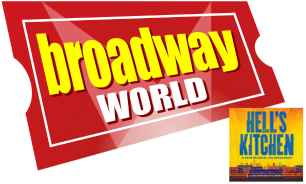Review: TRISTAN & ISOLDE at La Monnaie

After two incredible productions of La Giocconda and Frankenstein, my hopes were as high as they could get when I went to see La Monnaie's Production of Tristan and Isolde. Wagner is one of my favourite composers and artists. I will forever admire his genius in searching to create by himself the complete and perfect work of art, which he has managed with several of his operas (Der Ring, Lohengrin, Parsifal, Die Fliegende Hollander). His works have unity because he imagined them as writer, composer, stage designer, creator of universes. They pulsate with energy, life and wonderful explosions.
His musical vocabulary is like an overwhelming music for a film that he manages to create in our heads. I would even say that simply listening to Wagner one sees in one's mind everything he needs. Wagner enflames the imagination.
I am saying all of this because the first act of this production of Tristan and Isolde was probably one of the most static, uninteresting, unimaginative stagings I have ever seen im my life. One hour and thirty minutes of slow motion movements and people floting aimlessly into a wonderfully lit scenography. However, it lacked life, vibrance, tension. I'm sure Ralph Pleger must have imagined a concept that I unfortunately fail to grasp. A horriby dull and unimaginative 1st act that shadowed an amazing orchestra and brilliant singers. What a pitty!
The second act is an unfortunate contrast between a transcending scenography (Alexander Polzin), an unearthly light design (John Torres) and a very inspired choreography (Fernando Melo) that are purely sublime and a total lack of human interaction between characters. The only piece of scenery is a huge white bare tree-like construction that miraculously comes to life with the bodies of dancers dissimulated among the branches. A wonderful effect. Wonderful lighting. Great images. This group character becomes the symbol of Tristan and Isolde's inner dynamic and tormenting, consuming feelings. However, this kind of intellectual staging is very far from what acting in opera should be or from what directing opera should be. Singers appear floating on stage, with a semi choreographed movement with the only aim of changing direction and floating somewhere else. Their characters have no conscience of where they are, where they're coming from or why they are there. This kind of performance facing the audience regardless of the intensity or context of their scene is not only anti theatrical but also a sure way of eliminating any kind of empathy for the characters and their story. Context is totally dissipated by visual concept. Opera should definitely not be an exposition of live paintings (beautiful as they may be) with a live musical backround as pretext.
The third act is definitely what entirely destroys the last traces of human interaction. What is supposed to be the peak of emotional catharsis, the death of the two lovers touched by an impossible destructive passion becomes what might easily be mistaken with a modern exhibition in an interactive museum. A very difficcult to descipher play with shadows, inexplicable costumes and choices of makeup with no connection to the visual universe of the other two acts , nor with the symbolism sketched before. A huge iron like wall and glass pipes emerging from all over its surface, probably standing for the inner pain and violation of Tristan's soul, that eventually become redundant after a certain repetition of the same light variations and effects (again beaitiful as they may be).
Bryan Register is a wonderful Tristan, with an amazing powerful, nuanced and a very wide vocal range, Ann Petersen is impeccable as Isolde, having all the technical requirements for this role. I believe that if they had had guidance as far as staging and acting, both of them would have surely had the potential to create characters the audience would care about. It's not their fault and I applaud the wonderful work they've done for this production.
Tristan and Isolde is a show that has no spectacular or theatrical value, however it does have a certain value if considered from a very closed conceptual vision perspective that has nothing to do with the wonderful richness of the story. It might as well be an exhibit, each act a different one, with a musical undercore playing in the background. But that is not the aim of opera. Opera is a genre pertaining to musical theatre. It should tell a story and the characters should not be used to make a visual or conceptual statement.
However, I need to congratulate once more the La Monnaie for having the courage and the vision to try out different, new, daring visions and concepts. I will definitely be returning with profound curiosity to discover their future productions.
Videos

